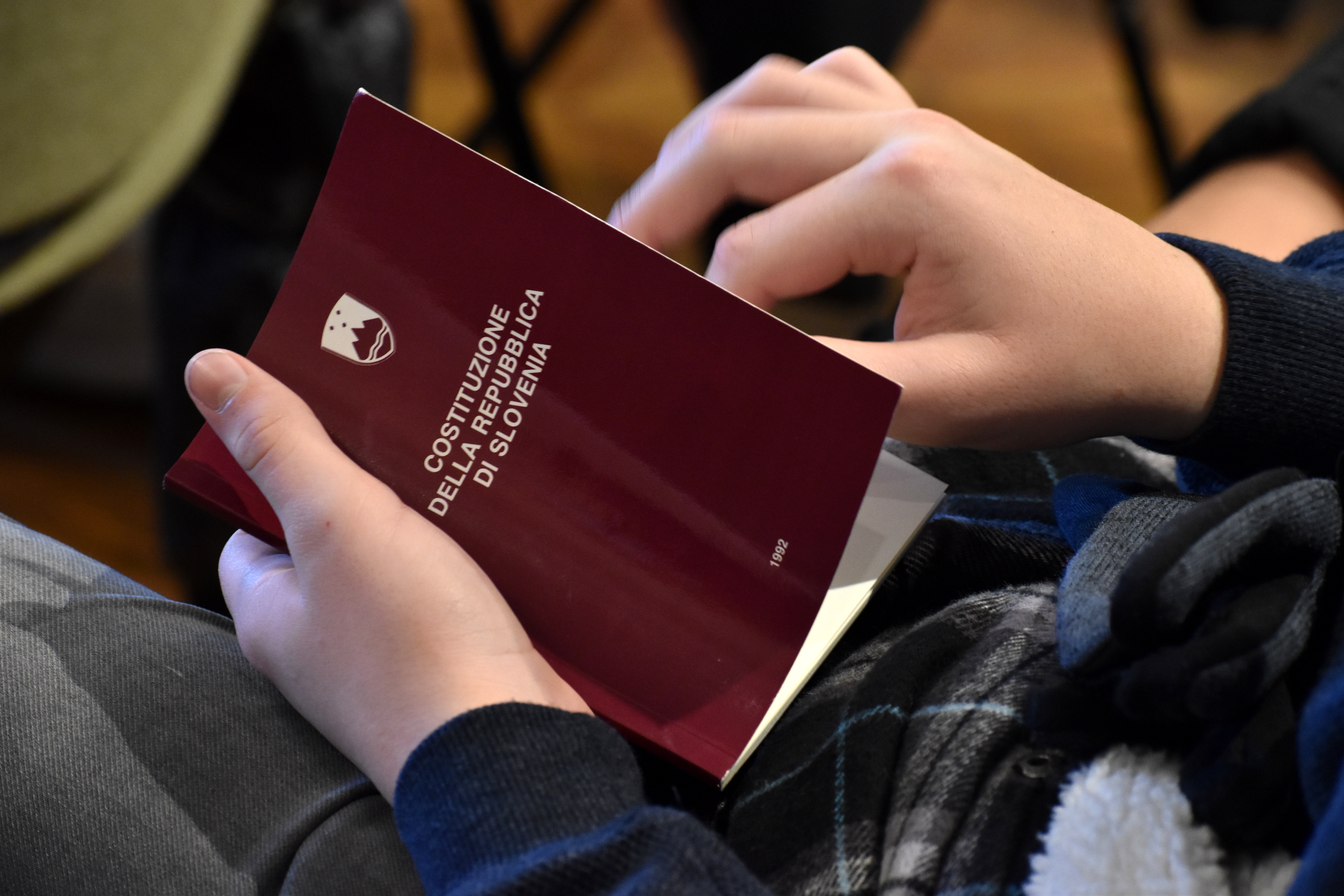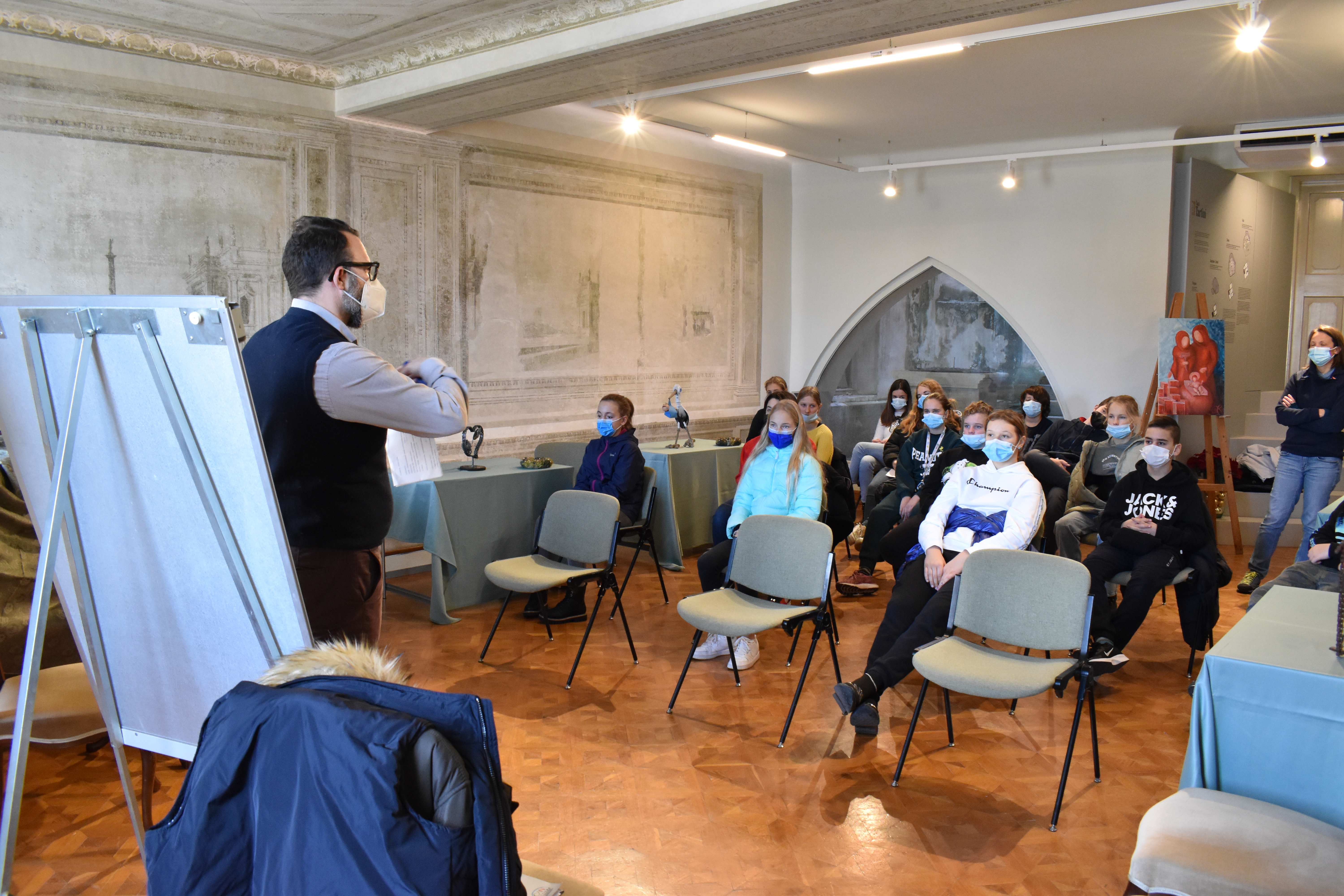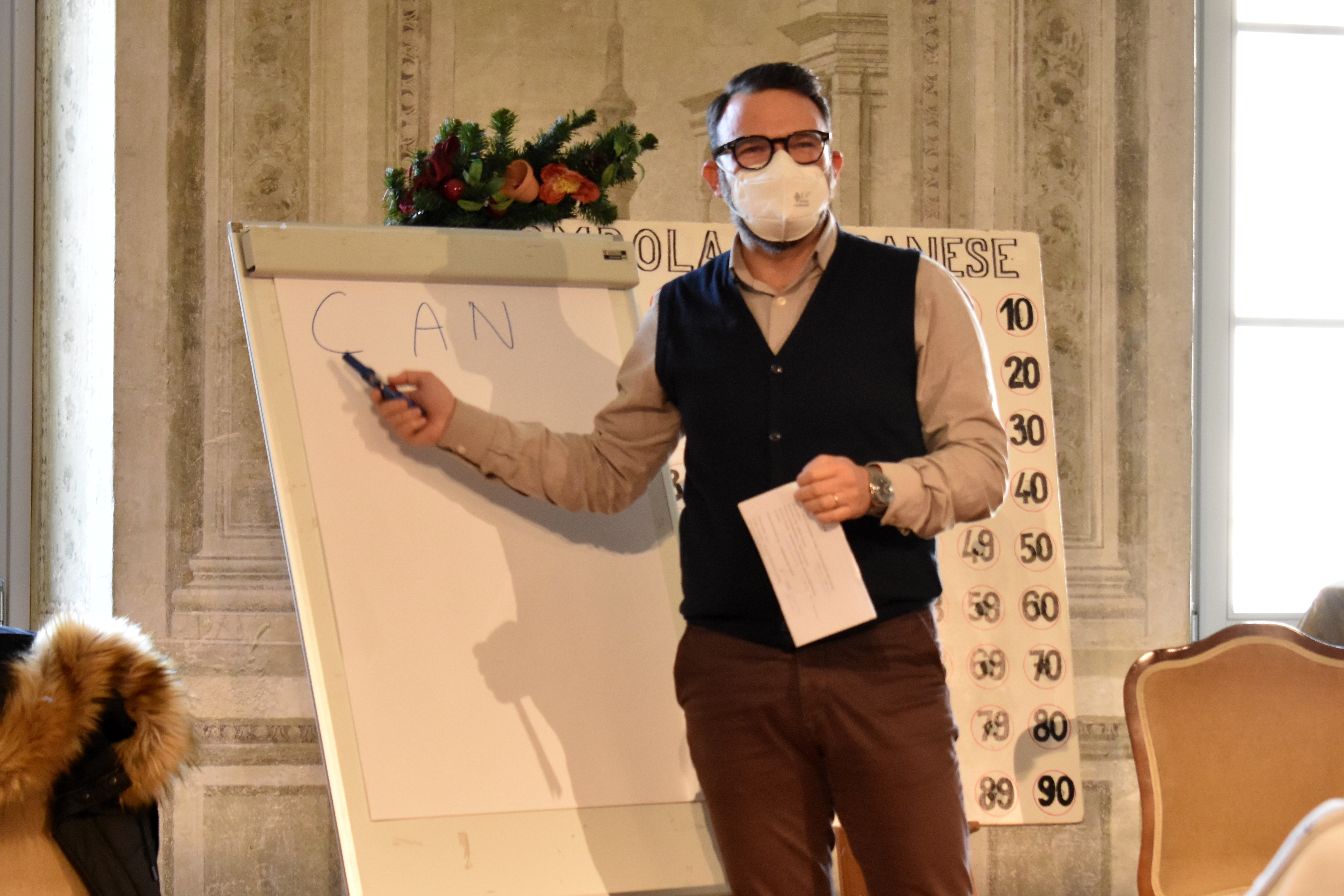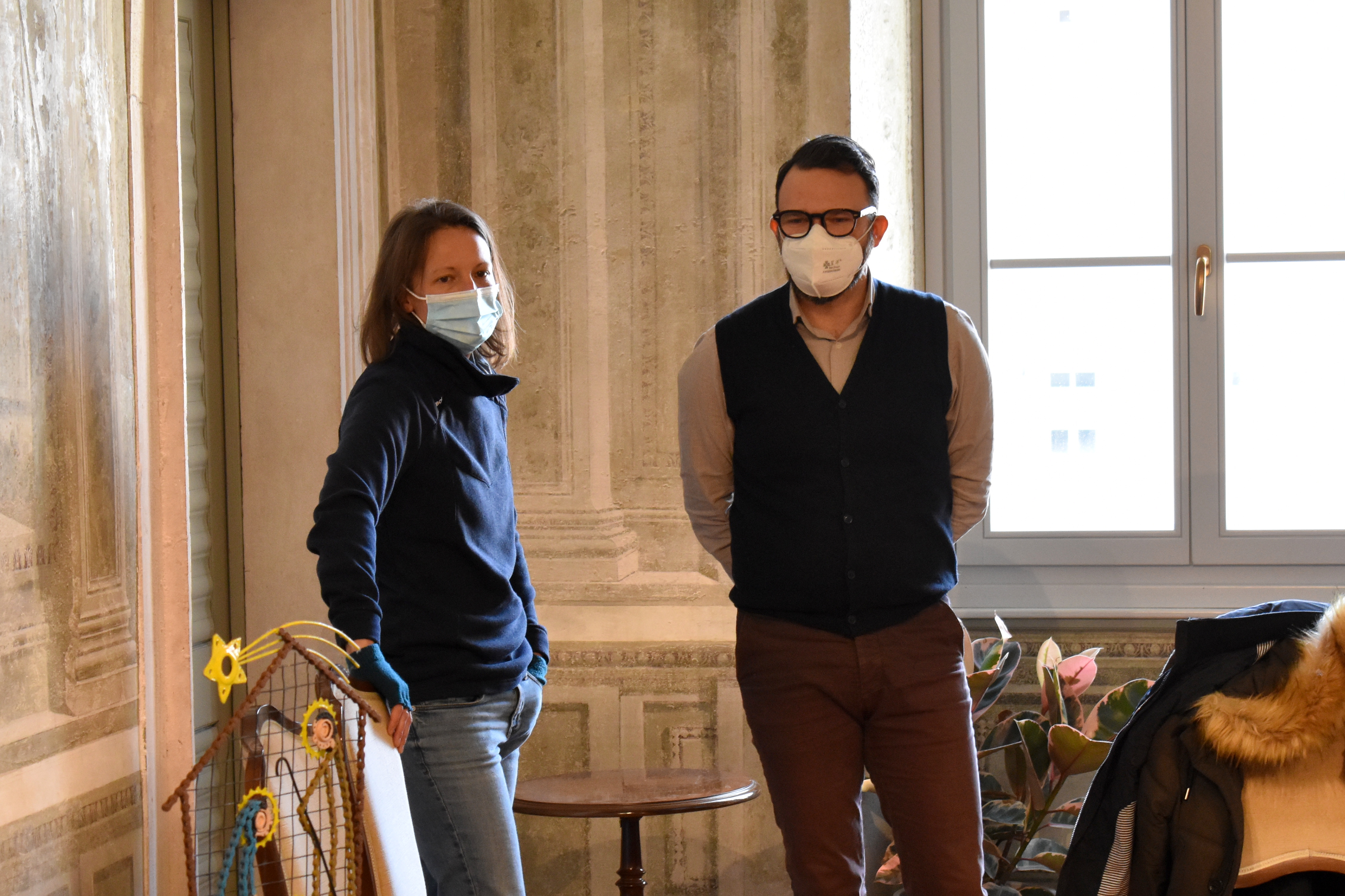Andrea Bartole gost srečanja ‘Danes z nami v šoli …’
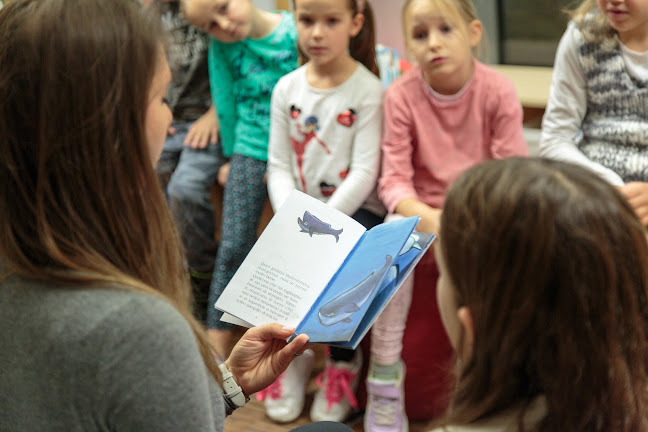
Ura pravljic v italijanskem jeziku odpovedana
12/14/2021
Družabni srečanji ob koncu leta v Luciji in Sečovljah
12/21/2021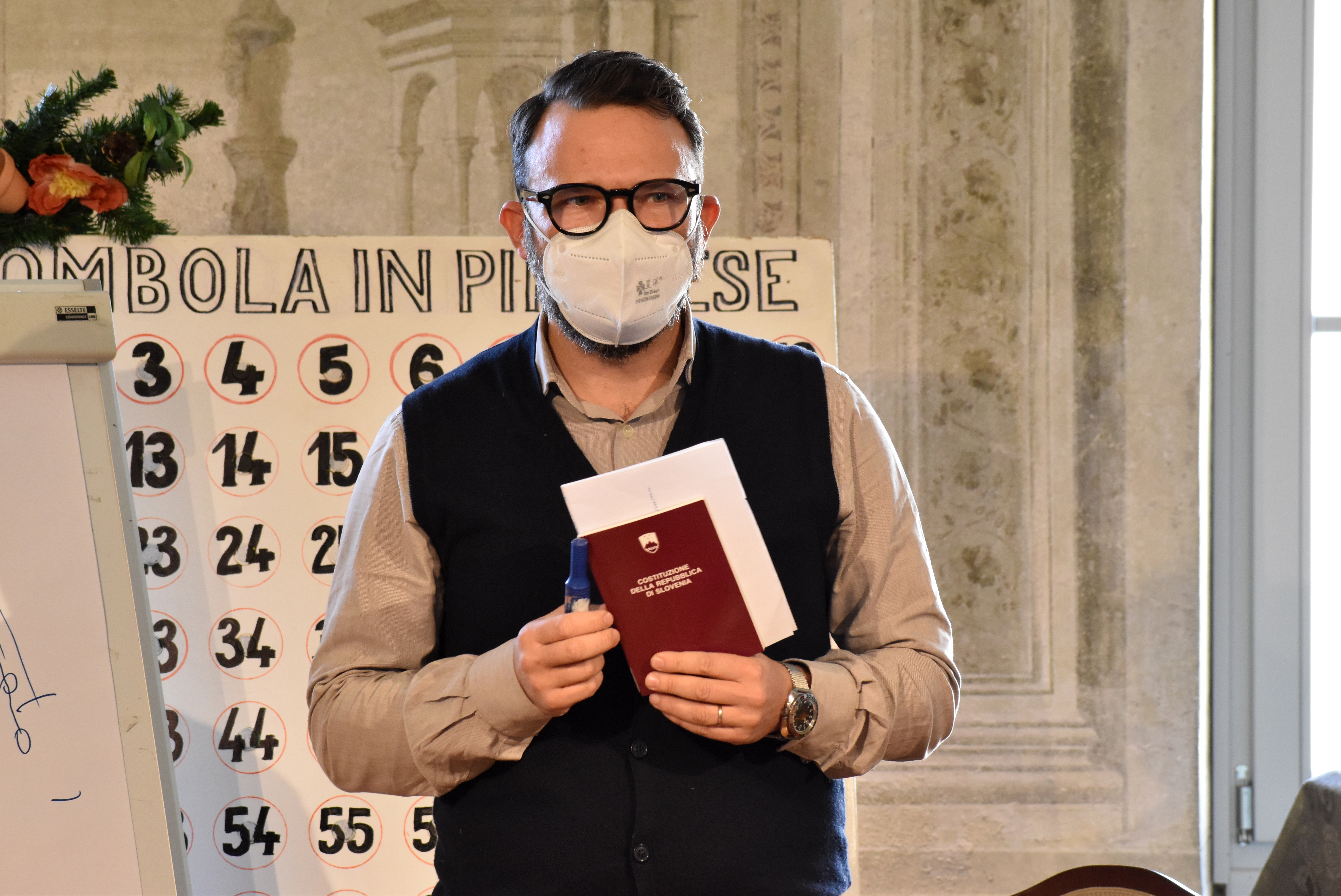
V sklopu srečanj z naslovom ‘Danes z nami v šoli …’ je pri učencih 7. in 8. razreda OŠ Vincenzo in Diego de Castro kot zadnji, ki deluje v ustanovah skupnosti italijanske narodnosti, gostoval predsednik SSIN Piran, Andrea Bartole. Pobudo si je zamislila učiteljica državljanske kulture, državljanstva in etike Katja Dellore, njen cilj pa je poglobiti pojme, ki jih učenci spoznavajo na učnih urah, ter se seznaniti z delovanjem italijanske narodne skupnosti. Zadnje srečanje, ki je potekalo 17. decembra 2021, je gostila Tartinijeva hiša. Na sedežu piranske skupnosti je učence sicer že konec novembra sprejela piranska podžupanja in predsednica lokalne italijanske skupnosti Giuseppe Tartini Manuela Rojec.
Bartole je učencem na preprost in jedrnat način predstavil vlogo italijanske narodne skupnosti v regiji ter posebnost, kot je možnost obiskovanja šole z učnim jezikom, ki ni jezik večinskega prebivalstva. S primeri, ki so jim blizu, je pokazal, da je italijanska identiteta nedvomno živa in se kaže na različne načine, kot so raba jezika, arhitektura in še vedno prisotni priimki, kot so Fonda, Apollonio, Petronio in ne nazadnje tudi njegov, saj se italijanska osnovna šola v Piranu nahaja v palači Bartole – Fonda.
Predsednik, ki je sicer po poklicu pravnik, je s seboj prinesel tudi nekaj izvodov slovenske Ustave, da bi učencem predstavil in z njimi analiziral člene, ki ščitijo avtohtono italijansko in madžarsko narodno skupnost. Za zaključek je ponazoril tudi naloge SSIN, kot sta preverjanje izvajanja dvojezičnosti na tem območju in rabe italijanščine v javnih službah. Z novimi spoznanji bodo učenci še bolje razumeli stoletno zgodovino prisotnosti italijanske skupnosti v naših krajih, njene posebne pravice in delovanje predstavniških teles.
‘Zelo sem zadovoljen s srečanjem, saj so učenci z zanimanjem spremljali razpravo in v njej sodelovali. Ko sem jim na preprost in jedrnat način predstavil člene ustave in zgodovino italijanske skupnosti skozi stoletja, je to pri njih izzvalo veliko tehtnih vprašanj, ki govorijo o tem, kako oni vidijo to našo skupnost in kaj jim pomeni. Pravzaprav so tudi razumeli in upoštevali težave, s katerimi se soočamo. Zamisli s tega srečanja so vsekakor spodbuda za razmišljanje o tem, kako bi lahko tudi učence vključili v njihovo reševanje,’ je poudaril Bartole.
Besedilo in foto: Kris Dassena
Prevod: Nataša Fajon

